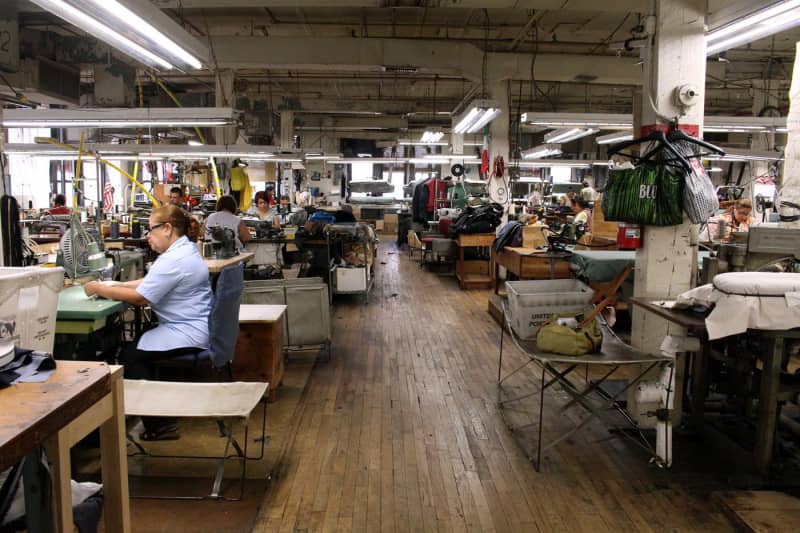Introduction
As a startup, finding the right clothing manufacturer can be a crucial step in taking your business to the next level. A reliable and efficient manufacturer can help you produce high-quality products at a reasonable cost, ensuring that your customers are satisfied with their purchases. However, with so many manufacturers out there, it can be challenging to know where to start. In this article, we will discuss some tips and strategies for finding the right clothing manufacturer for your startup.
1.Research the Market
Before you begin your search for a clothing manufacturer, it is important to research the market and identify your target audience. Understanding the specific niche or demographic that your clothing line caters to will help you narrow down your search and find a manufacturer that specializes in the type of clothing you want to produce. Conduct market research by analyzing trends, studying your competition, and identifying any gaps in the market that your brand can fill.

2.Identify Your Requirements
Once you have a clear understanding of your target market, the next step is to identify your specific requirements for a clothing manufacturer. Consider factors such as the type of clothing you want to produce (e.g., tops, bottoms, outerwear), the materials you want to use, and any specific production requirements (e.g., sustainable practices, ethical sourcing). Knowing your requirements will help you find a manufacturer that aligns with your brand values and can meet your needs.
3.Research Potential Manufacturers
Once you have defined your needs, the next step is to research potential manufacturers. There are several ways to do this, including:
a. Online directories: Online directories and databases are a great resource for finding clothing manufacturers. These directories typically list multiple manufacturers, along with information about their products, capabilities, and contact information. There are several online directories that list clothing manufacturers, such as Alibaba, ThomasNet, and Manufacturing Global. These directories allow you to filter manufacturers by location, product type, and other criteria.
b. Trade shows: Attending trade shows and industry events is another effective way to find clothing manufacturers. These events provide an opportunity to meet manufacturers face-to-face and learn about their products and services. Some popular trade shows and events include the MAGIC Show, the Apparel Sourcing Show, and the Textile and Apparel Sourcing Trade show.

c. Industry associations: Many industries have associations that can provide information on reputable manufacturers. For example, the Fashion Association of India (FAI) and the American Apparel and Footwear Association (AAFA) can help you connect with manufacturers in their respective regions.
d. Social Media and Networking: Social media and networking can also be valuable resources for finding clothing manufacturers. Platforms such as LinkedIn and Facebook can be used to connect with manufacturers and other industry professionals. Additionally, joining relevant online forums or communities can provide an opportunity to ask questions and gather information about potential manufacturers.
4.Check their credentials and reputation
Once you have a list of potential manufacturers, it's essential to check their credentials and reputation. Some factors to consider when evaluating a manufacturer's credentials and reputation include:
a. Experience: Look for manufacturers with several years of experience in the industry. Experienced manufacturers are more likely to have the skills and knowledge needed to produce high-quality products that meet your specifications.
b. Production capabilities: Make sure the manufacturer has the necessary equipment and facilities to produce your products to your specifications. For example, if you need custom dyed fabrics, ensure that the manufacturer has access to high-quality dyeing machines.
c. Quality control: Ensure that the manufacturer has a robust quality control system in place. This includes processes for inspecting raw materials, testing finished products, and addressing any issues that arise during production. A manufacturer with a strong quality control system is more likely to produce products that meet your quality standards.
d. Production timeline: Ensure that the manufacturer can meet your production timeline. Factors such as order size, product complexity, and shipping time can all affect production timelines, so it's essential to discuss these factors with the manufacturer upfront.
e. Customer reviews: Read customer reviews of the manufacturer to get an idea of their reputation and the quality of their products. Look for patterns in the reviews, such as consistent positive feedback or recurring issues with product quality or delivery times.
f. Licenses and certifications: Check if the manufacturer has any licenses or certifications relevant to their industry. For example, if you're producing clothing made from organic materials, ensure that the manufacturer has the necessary certifications to prove that their materials are organic.

5.Request Samples
Before committing to a manufacturer, it's essential to request samples of their products. Samples will allow you to assess the quality of the manufacturer's work and ensure that they are capable of producing the type of clothing you want to sell. This will give you a better idea of the quality of their work and whether their products meet your specifications. When requesting samples, be sure to specify your product requirements clearly and provide any necessary artwork or design files.
When evaluating samples, pay attention to the following factors:
a. Material quality: Check the quality of the fabric used in the sample. Is it soft, durable, and comfortable? Does it meet your quality standards?
b. Workmanship: Evaluate the stitching, hemming, and other aspects of the garment's construction. Are they well-made and consistent with your specifications?
c. Color accuracy: Ensure that the sample's colors match your expectations. Check for any inconsistencies in the shade or tone of the fabric used, and make sure that the final product will have the same quality as the sample.
d. Durability: Test the sample by wearing it for a short period of time to check its durability. Look for any signs of wear or tear, and make sure that the sample can withstand regular wear and tear without showing signs of damage.
e. Styling: Evaluate the styling of the sample, including cuts, designs, and details. Make sure that the sample reflects your brand identity and style preferences.
f. Comfort: Test the sample by trying it on to check its comfort level. Make sure that it fits well, is not too tight or too loose, and feels comfortable to wear.
g. Functionality: If the sample is a piece of clothing with functional features such as pockets, zippers, or buttons, evaluate their functionality to ensure that they work properly and don't cause any issues during production.
h. Cost-effectiveness: Consider the cost of the sample compared to the potential production costs of your final product. Make sure that the sample is within your budget and provides good value for money.
6.Negotiate terms and pricing
Once you have found a manufacturer that meets your needs, it's time to negotiate terms and pricing. This includes:
a. Order minimums: Most manufacturers require a minimum order quantity (MOQ) to produce your products. Make sure you understand the MOQ and ensure that it's feasible for your business.
b. Pricing: Negotiate pricing with the manufacturer to ensure that it's reasonable and competitive. Factors such as material costs, labor costs, and shipping costs can all affect pricing, so it's essential to understand these factors before agreeing on a price.
c. Payment terms: Ensure that the payment terms are fair and flexible enough to accommodate your business needs. For example, some manufacturers may offer net terms or credit options for established clients.
7.Visit Their Factory
If possible, visit the factory of your chosen manufacturer before placing your order. This will give you an opportunity to see their production process firsthand and ensure that they are meeting your quality standards. It will also help you build a relationship with the manufacturer and ensure that you are both on the same page.
8.Maintain a Good Working Relationship
Once you have selected a clothing manufacturer, it's essential to maintain a good working relationship with them. This includes communicating clearly about your needs and expectations, providing feedback on their work, and addressing any issues or concerns promptly. You should also keep in touch with the manufacturer periodically to discuss any changes or updates to your production needs. Building a strong working relationship with your manufacturer will help ensure that your products are of high quality and meet your customers' expectations. Here are some tips:
a. Communication: Keep open lines of communication with the manufacturer throughout the production process. This will help you address any issues that may arise and ensure that your products meet your expectations.
b. Feedback: Provide feedback on the manufacturer's products and services to help them improve their offerings. This will also help build trust and loyalty between your businesses.
c. Long-term partnership: Consider establishing a long-term partnership with the manufacturer if they meet your needs and provide high-quality products at a reasonable cost. This can help you save time and money in the long term.

Conclusion
In conclusion, finding the right clothing manufacturer is a critical step for any startup fashion brand. By researching the market, identifying your requirements, and leveraging various resources and strategies, you can find a manufacturer that aligns with your brand values and can help you achieve your goals.
Post time: Dec-15-2023





